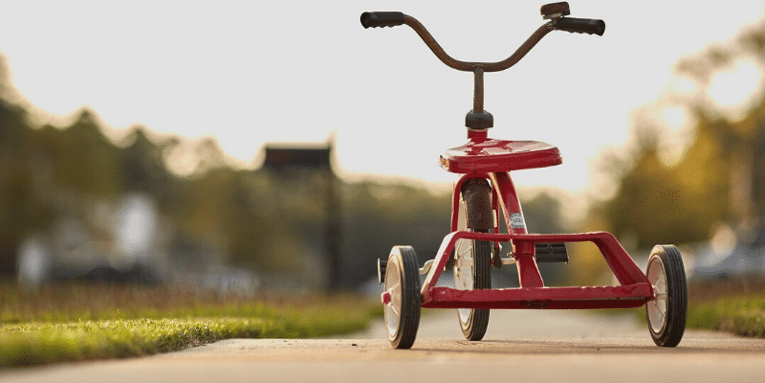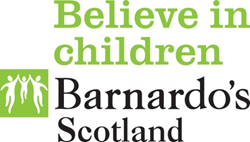Not seen and not heard

Vulnerable children in lockdown
Tying in with our current campaign against child neglect, Daljeet Dagon, National Programme Manager for Child Sexual Exploitation for Barnardo's Scotland, explains how the current lockdown is affecting vulnerable children, and what we can all do about it.

It’s now been eight weeks since lockdown began and all of our lives, including those of the children and their families that we work with, have been affected by Covid-19. There have been differences in how this may have been experienced due to existing inequalities, vulnerabilities and factors relevant to them as individuals.
There are fewer protective adults in communities (e.g. teachers, youth and community workers) who previously may have acted as safeguards or disrupted the exploitations which children can be vulnerable to. At the same time as children have been removed from physical sight of professionals, they are spending more time in families, more time online and potentially meeting in covert locations so as not to be seen breaking the lockdown.
However, we also know that children avoid being seen in public places for fear of being returned home. Therefore, we have had an increased number of children unwilling to share with us where they are going and who with, but often this seems to be inside houses and places where they are hidden from view, which also potentially increases risks of further abuse and exploitation.
Care-experienced young people have also shared with us that they are being reported to police for breaching lockdown rules by residential staff. Whilst I understand the dilemma of risking staff and other residents’ health, I can’t imagine many non-care-experienced young people being reported to police by their caregivers. Disciplinary actions include young people having their pocket money restricted - effectively criminalising young people - and if they also receive a fine, they’re being financially disadvantaged by such actions.
Children are spending increased time online, and this is less likely to be witnessed by protective adults; they are at increased risk of being targeted online by abusers. Abusers are able to distance children much more easily when those protective networks have limited access to children.
Social care/education services are increasingly adopting online methods to engage with children, with traditional methods of engagement declining. For some children and young people, a text/phone call/video call is an easier form of communication; whilst for others, the lack of privacy and potential risk of harm within the home can restrict their ability to engage freely.
Alternatively, children may, like many of us, be really struggling to stay indoors or not fully understand the importance of compliance. Trauma and uncertainty can erode children’s confidence and ability to trust and talk to adults about their experiences, and they may be in fight/flight survival mode.
It is vital that they are offered a safe space place to discuss any risks they may have faced, or any harm they or others may be experiencing. This discussion and the subsequent support are crucial in effectively safeguarding them from further harm.
We should always be curious and concerned about their welfare and safety. Here are four suggested questions:
1) Do you need any help right now?
It’s important to check out if young people are safe and well - or do they have any immediate worries, concerns or needs?
2) How are things at home / where you live?
Are there any factors at home which are contributing to you finding it hard to comply with lockdown? Who lives at home with you? Do you have good relationships with those at home, or is there conflict?
3) What support do you (or your family) need to manage lockdown?
There may be limited support services operating currently, but there is still some provision in some areas, including mental health support through helplines and online self-help resources, as well as specialist services operating to respond to domestic violence and child protection.
4) Are there other people, like friends or family members, whom you are worried about?
There may be other young people or other sources of harm which are causing young people problems. This may be due to sexual or criminal forms of exploitation, where abusers are taking advantage of lockdown and the lack of protective adults and services currently open for young people.
One particular irony in all of this is that we are often using the same digital devices and social media platforms that some children have been previously exploited and abused through. This can be challenging for children, and may also expose them to contact from previous/ current abusers. It can be particularly difficult for those children that had moved away from social media following advice and as a way of protecting themselves.
As our parliaments and industries discuss potential ‘route maps’ out of this lockdown situation and what models our communities will resemble in future, we in this field should likewise begin to consider how to perhaps reconfigure and strengthen our response systems to the needs of our children and young people.

It’s now been eight weeks since lockdown began and all of our lives, including those of the children and their families that we work with, have been affected by Covid-19. There have been differences in how this may have been experienced due to existing inequalities, vulnerabilities and factors relevant to them as individuals.
There are fewer protective adults in communities (e.g. teachers, youth and community workers) who previously may have acted as safeguards or disrupted the exploitations which children can be vulnerable to. At the same time as children have been removed from physical sight of professionals, they are spending more time in families, more time online and potentially meeting in covert locations so as not to be seen breaking the lockdown.
Change in attitude
We have witnessed a change in attitude from some agencies toward children who are not complying with lockdown. Where children have been approached by (some) police, their approach has often been quite hostile, rather than with a safeguarding lens - attempting to understand why children might not be compliant to lockdown. The approach has been forceful, punitive (threats of fines) and very much focused on returning them home as quickly as possible, without assessment of whether that is a safe place for them to be.However, we also know that children avoid being seen in public places for fear of being returned home. Therefore, we have had an increased number of children unwilling to share with us where they are going and who with, but often this seems to be inside houses and places where they are hidden from view, which also potentially increases risks of further abuse and exploitation.
Care-experienced young people have also shared with us that they are being reported to police for breaching lockdown rules by residential staff. Whilst I understand the dilemma of risking staff and other residents’ health, I can’t imagine many non-care-experienced young people being reported to police by their caregivers. Disciplinary actions include young people having their pocket money restricted - effectively criminalising young people - and if they also receive a fine, they’re being financially disadvantaged by such actions.
Less safeguarding
During this time of lockdown and containment there are fewer ‘eyes and ears’ available to safeguard and protect children from harm, and our own services are reporting a significant decrease in referrals due to schools and health services having less contact.Children are spending increased time online, and this is less likely to be witnessed by protective adults; they are at increased risk of being targeted online by abusers. Abusers are able to distance children much more easily when those protective networks have limited access to children.
Social care/education services are increasingly adopting online methods to engage with children, with traditional methods of engagement declining. For some children and young people, a text/phone call/video call is an easier form of communication; whilst for others, the lack of privacy and potential risk of harm within the home can restrict their ability to engage freely.
Children struggling with staying at home
There will be many children who feel unable to stay at home during lockdown, for a variety of reasons. There may be violence and conflict within the home, their family members may be key workers and children may struggle being home alone, or they may be being exploited or harmed by extra-familial sources.Alternatively, children may, like many of us, be really struggling to stay indoors or not fully understand the importance of compliance. Trauma and uncertainty can erode children’s confidence and ability to trust and talk to adults about their experiences, and they may be in fight/flight survival mode.
What can be done?
De-escalating children’s fears by working at a child’s pace, clearly communicating that you are concerned for them, will produce more helpful responses from children and enable them to communicate better.It is vital that they are offered a safe space place to discuss any risks they may have faced, or any harm they or others may be experiencing. This discussion and the subsequent support are crucial in effectively safeguarding them from further harm.
We should always be curious and concerned about their welfare and safety. Here are four suggested questions:
1) Do you need any help right now?
It’s important to check out if young people are safe and well - or do they have any immediate worries, concerns or needs?
2) How are things at home / where you live?
Are there any factors at home which are contributing to you finding it hard to comply with lockdown? Who lives at home with you? Do you have good relationships with those at home, or is there conflict?
3) What support do you (or your family) need to manage lockdown?
There may be limited support services operating currently, but there is still some provision in some areas, including mental health support through helplines and online self-help resources, as well as specialist services operating to respond to domestic violence and child protection.
4) Are there other people, like friends or family members, whom you are worried about?
There may be other young people or other sources of harm which are causing young people problems. This may be due to sexual or criminal forms of exploitation, where abusers are taking advantage of lockdown and the lack of protective adults and services currently open for young people.
One particular irony in all of this is that we are often using the same digital devices and social media platforms that some children have been previously exploited and abused through. This can be challenging for children, and may also expose them to contact from previous/ current abusers. It can be particularly difficult for those children that had moved away from social media following advice and as a way of protecting themselves.
As our parliaments and industries discuss potential ‘route maps’ out of this lockdown situation and what models our communities will resemble in future, we in this field should likewise begin to consider how to perhaps reconfigure and strengthen our response systems to the needs of our children and young people.
- Fearless Scotland and Barnardo’s have been working together to empower young people to recognise the signs of harm and neglect amongst their peers, as part of the Fearless Covid-19 youth resilience series – find out more.
- Learn about our current campaign tackling the issue of child neglect, and how you can tell us about it- 100% anonymously.